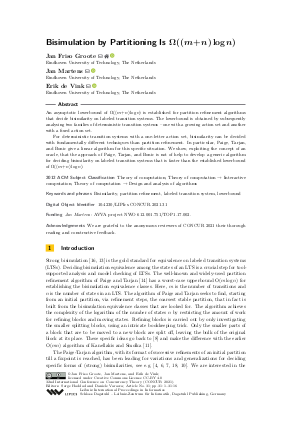LIPIcs.CONCUR.2021.31.pdf
- Filesize: 0.77 MB
- 16 pages

 Creative Commons Attribution 4.0 International license
Creative Commons Attribution 4.0 International license












Feedback for Dagstuhl Publishing